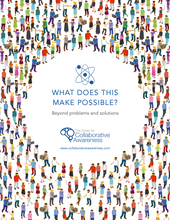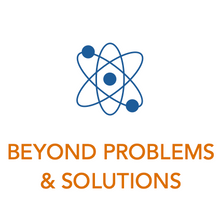What Does This Make Possible? Thinking: beyond problems and solutions
What Does This Make Possible is at the core of every tool and process we created. Both Clear Mind and Relationship Design come from the premise that everything that comes into our awareness if for us, from us. First we notice what is pulling our focus or vying for our attention, then you transform or translate the messages into what you want to design and grow.
Collaboration Requires a New Model
Every day you wake up as the creator of your life, irrespective of anything that happened yesterday, whether it was good or bad or right or wrong. As the creator, there’s a landscape in front of you.
You could approach the day, the people you interact with, from the perspective of looking at where the problems lie. Or you could take stock of the landscape—which could even look like World War III—and ask yourself What does this make possible? —only because this is what is here. It is the quickest way to creating a more life-giving landscape going forward.
-
When defining the problem includes people rather than logical processes, like fixing your car, our brains become messy; one-third to one-half of the brain shuts down as we focus on protecting ourselves from others judgment and actions.
-
Problem-Solution is a necessary and useful model that comes with the added dopamine hit of certainty that we get when we find the solution. It’s incredibly seductive, so why not use it everywhere?
- To become more resilient, we must ask ourselves the question, What does this current landscape make possible? Feeling safe and connected is required in order to authentically engage our whole brain. The What Does This Make Possible? Model draws on our full hearts and minds, which in turn invites others to meet us there.




